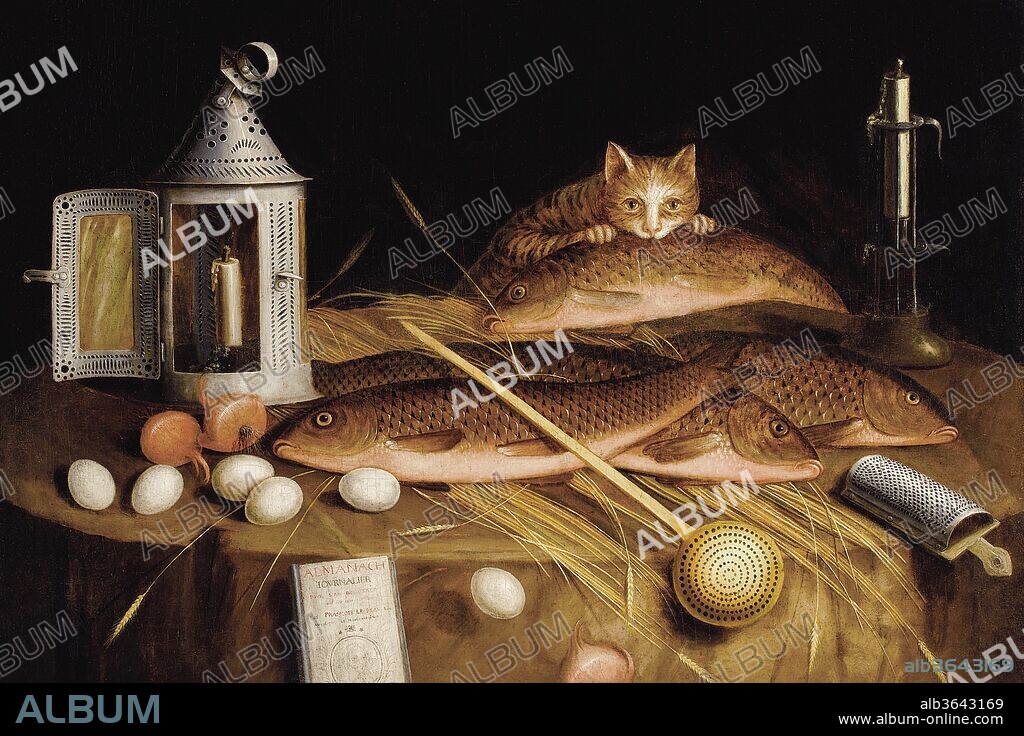alb3643169
Kitchen Still Life with Fish and Cat

|
Ajouter à une autre Lightbox |
|
Ajouter à une autre Lightbox |



Avez-vous déjà un compte? S'identifier
Vous n'avez pas de compte ? S'inscrire
Acheter cette image

Titre:
Kitchen Still Life with Fish and Cat
Légende:
Voir la traduction automatique
The still-life painter Sebastian Stoskopff (1597-1657), whose work inspired the present painting, was a native of Strasbourg. His still lifes forged an interesting blend of influences from the Hanau/Frankfurt schools (notably the work of Georg Flegel) and from Paris, where he had lived and worked from 1622 to 1639. Stoskopff's paintings are characterized by a strongly geometric ordering of space, in which objects are arranged with great clarity, often against rich, dark backgrounds. His works often feature one or more vanitas elements--a skull, a well-thumbed book, or a burning candle that will soon be snuffed out--each one of them reminders of the temporary nature of human existence. Stoskopff was fond of painting demanding textural effects, particularly folds and tears in paper as well as both typeset and manuscript pages. He also painted dated pages from almanacs--devices through which he dated his paintings. Like the present work, probably by a provincial Lyonnais artist who fell profoundly under Stoskopff's spell, Sebastian Stoskopff included a page from a 1630 almanac in one of his best-known paintings, a Vanity still life in the collection of the Kunstmuseum, Basel., Sebastian Stoskopff, 1650
Crédit:
Album / Universal Images Group / Universal History Archive
Autorisations:
Modèle: Non - Propriété: Non
Questions sur les droits?
Questions sur les droits?
Taille de l'image:
3000 x 2000 px | 17.2 MB
Taille d'impression:
25.4 x 16.9 cm | 10.0 x 6.7 in (300 dpi)
Mots clés:
 Pinterest
Pinterest Twitter
Twitter Facebook
Facebook Copier le lien
Copier le lien Email
Email
